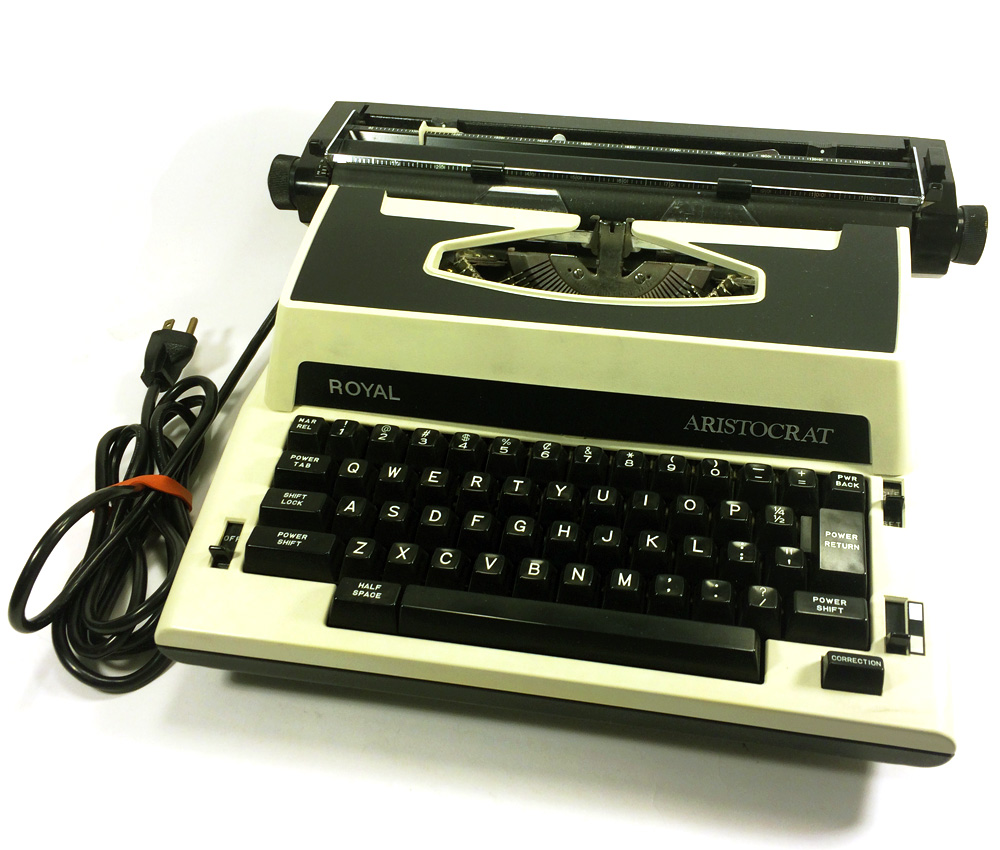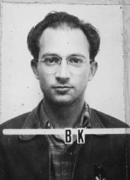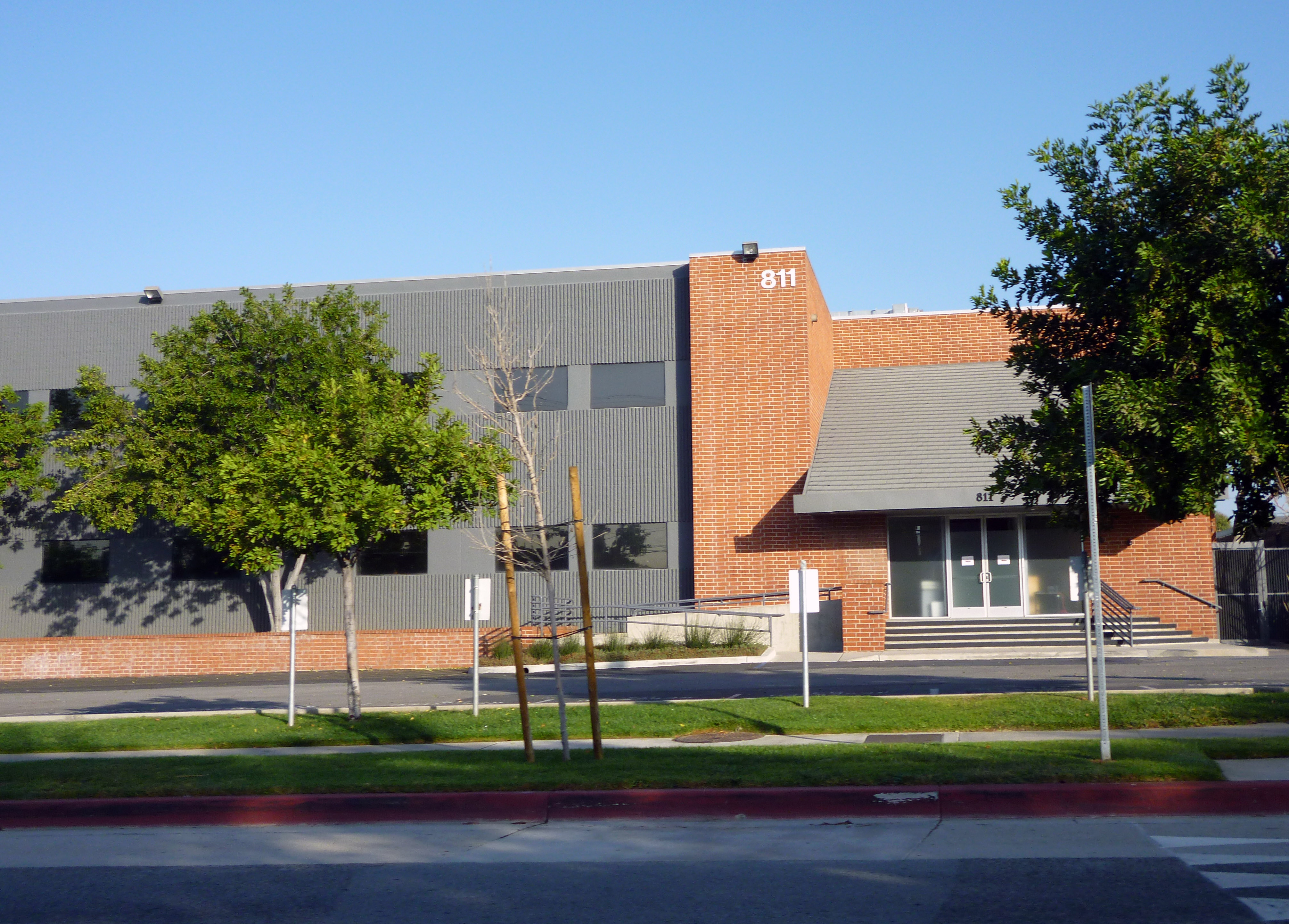|
LGP-30
The LGP-30, standing for Librascope General Purpose and then Librascope General Precision, was an early off-the-shelf computer. It was manufactured by the Librascope company of Glendale, California (a division of General Precision Inc.), and sold and serviced by the Royal Precision Electronic Computer Company, a joint venture with the Royal McBee division of the Royal Typewriter Company. The LGP-30 was first manufactured in 1956, at a retail price of $47,000, . The LGP-30 was commonly referred to as a desk computer. Its height, width, and depth, excluding the typewriter shelf, was . It weighed about , and was mounted on sturdy casters which facilitated moving the unit. Design The primary design consultant for the Librascope computer was Stan Frankel, a Manhattan Project veteran and one of the first programmers of ENIAC. He designed a usable computer with a minimal amount of hardware. The single address instruction set had only 16 commands. Magnetic drum memory held the m ... [...More Info...] [...Related Items...] OR: [Wikipedia] [Google] [Baidu] |
LGP-30
The LGP-30, standing for Librascope General Purpose and then Librascope General Precision, was an early off-the-shelf computer. It was manufactured by the Librascope company of Glendale, California (a division of General Precision Inc.), and sold and serviced by the Royal Precision Electronic Computer Company, a joint venture with the Royal McBee division of the Royal Typewriter Company. The LGP-30 was first manufactured in 1956, at a retail price of $47,000, . The LGP-30 was commonly referred to as a desk computer. Its height, width, and depth, excluding the typewriter shelf, was . It weighed about , and was mounted on sturdy casters which facilitated moving the unit. Design The primary design consultant for the Librascope computer was Stan Frankel, a Manhattan Project veteran and one of the first programmers of ENIAC. He designed a usable computer with a minimal amount of hardware. The single address instruction set had only 16 commands. Magnetic drum memory held the m ... [...More Info...] [...Related Items...] OR: [Wikipedia] [Google] [Baidu] |
Royal McBee
The Royal Typewriter Company is a manufacturer of typewriters founded in January 1904. It was headquartered in New York City with its factory in Hartford, Connecticut. History The Royal Typewriter Company was founded by Edward B. Hess and Lewis C. Myers in January 1904 in a machine shop in Brooklyn, New York. The next year, Hess and Myers turned to Thomas Fortune Ryan, to whom they demonstrated a prototype typewriter. Their machine had numerous innovations including a friction-free, ball-bearing, one-track rail to support the weight of the carriage, a new paper feed, a lighter and faster typebar action, and complete visibility of the words as they are typed. Ryan put up $220,000 in exchange for financial control. In March 1906 the first Royal typewriter, the Royal Standard, was sold. The Royal Standard was set apart from its competition by its 'flatbed' design. With demand increasing, Royal purchased 5¼ acres in Hartford, Connecticut, as the new site for its manufacturing faci ... [...More Info...] [...Related Items...] OR: [Wikipedia] [Google] [Baidu] |
Royal Typewriter Company
The Royal Typewriter Company is a manufacturer of typewriters founded in January 1904. It was headquartered in New York City with its factory in Hartford, Connecticut. History The Royal Typewriter Company was founded by Edward B. Hess and Lewis C. Myers in January 1904 in a machine shop in Brooklyn, New York. The next year, Hess and Myers turned to Thomas Fortune Ryan, to whom they demonstrated a prototype typewriter. Their machine had numerous innovations including a friction-free, ball-bearing, one-track rail to support the weight of the carriage, a new paper feed, a lighter and faster typebar action, and complete visibility of the words as they are typed. Ryan put up $220,000 in exchange for financial control. In March 1906 the first Royal typewriter, the Royal Standard, was sold. The Royal Standard was set apart from its competition by its 'flatbed' design. With demand increasing, Royal purchased 5¼ acres in Hartford, Connecticut, as the new site for its manufacturing faci ... [...More Info...] [...Related Items...] OR: [Wikipedia] [Google] [Baidu] |
Stan Frankel
Stanley Phillips Frankel (1919 – May, 1978) was an American computer scientist. He worked in the Manhattan Project and developed various computers as a consultant. Early life He was born in Los Angeles, attended graduate school at the University of Rochester, received his PhD in physics from the University of California, Berkeley, and began his career as a post-doc student under J. Robert Oppenheimer at University of California, Berkeley in 1942. Career Frankel helped develop computational techniques used in the nuclear research taking place at the time, notably making some of the early calculations relating to the diffusion of neutrons in a critical assembly of uranium with Eldred Nelson. He joined the T (Theoretical) Division of the Manhattan Project at Los Alamos in 1943. His wife Mary Frankel was also hired to work as a human computer in the T Division. While at Los Alamos, Frankel and Nelson organized a group of scientists' wives, including Mary, to perform som ... [...More Info...] [...Related Items...] OR: [Wikipedia] [Google] [Baidu] |
Librascope
Librascope was a Glendale, California, division of General Precision, Inc. (GPI). It was founded in 1937 by Lewis W. Imm to build and operate theater equipment, and acquired by General Precision in 1941. During World War II it worked on improving aircraft load balancing. Later, Librascope became a manufacturer of early digital computers sold in both the business and defense markets. It hired Stan Frankel, a Manhattan Project veteran and early ENIAC programmer, to design the LGP-30 desktop computer in 1956. In 1964 Librascope's Avionic Equipment Division at San Marcos has been shifted to the Aerospace Group, GPI as the West Coast facility of the Kearfott Division. Librascope was eventually purchased by Singer Corporation and moved into the manufacture of marine systems and land-based C3 (Command, Control, Communication) systems for the international defense industry. The company specialized in fire control systems for torpedoes, though they continued to work on a variety ... [...More Info...] [...Related Items...] OR: [Wikipedia] [Google] [Baidu] |
Drum Memory
Drum memory was a magnetic data storage device invented by Gustav Tauschek in 1932 in Austria. Drums were widely used in the 1950s and into the 1960s as computer memory. For many early computers, drum memory formed the main working memory of the computer. It was so common that these computers were often referred to as ''drum machines''. Some drums were also used as secondary storage as for example various IBM drum storage drives. Drums were displaced as primary computer memory by magnetic core memory, which offered a better balance of size, speed, cost, reliability and potential for further improvements. Drums in turn were replaced by hard disk drives for secondary storage, which were both less expensive and offered denser storage. The manufacturing of drums ceased in the 1970s. Technical design A drum memory or drum storage unit contained a large metal cylinder, coated on the outside surface with a ferromagnetic recording material. It could be considered the precu ... [...More Info...] [...Related Items...] OR: [Wikipedia] [Google] [Baidu] |
Friden Flexowriter
The Friden Flexowriter produced by the Friden Calculating Machine Company, was a teleprinter, a heavy-duty electric typewriter capable of being driven not only by a human typing, but also automatically by several methods, including direct attachment to a computer and by use of paper tape. Elements of the design date to the 1920s, and variants of the machine were produced until the early 1970s; the machines found a variety of uses during the evolution of office equipment in the 20th century, including being among the first electric typewriters, computer input and output devices, forerunners of modern word processing, and also having roles in the machine tool and printing industries. History Origins and early history The Flexowriter can trace its roots to some of the earliest electric typewriters. In 1925, the Remington Typewriter Company wanted to expand their offerings to include electric typewriters. Having little expertise or manufacturing ability with electrical appliance ... [...More Info...] [...Related Items...] OR: [Wikipedia] [Google] [Baidu] |
Word (data Type)
In computing, a word is the natural unit of data used by a particular processor design. A word is a fixed-sized datum handled as a unit by the instruction set or the hardware of the processor. The number of bits or digits in a word (the ''word size'', ''word width'', or ''word length'') is an important characteristic of any specific processor design or computer architecture. The size of a word is reflected in many aspects of a computer's structure and operation; the majority of the registers in a processor are usually word-sized and the largest datum that can be transferred to and from the working memory in a single operation is a word in many (not all) architectures. The largest possible address size, used to designate a location in memory, is typically a hardware word (here, "hardware word" means the full-sized natural word of the processor, as opposed to any other definition used). Documentation for older computers with fixed word size commonly states memory sizes in words ra ... [...More Info...] [...Related Items...] OR: [Wikipedia] [Google] [Baidu] |
Bit-serial Architecture
In digital logic applications, bit-serial architectures send data one bit at a time, along a single wire, in contrast to bit-parallel word architectures, in which data values are sent all bits or a word at once along a group of wires. All digital computers built before 1951, and most of the early massive parallel processing machines used a bit-serial architecture—they were serial computers. Bit-serial architectures were developed for digital signal processing in the 1960s through 1980s, including efficient structures for bit-serial multiplication and accumulation. Often, N serial processors will take less FPGA area and have a higher total performance than a single N-bit parallel processor. See also * 1-bit architecture * Bit banging * Bit slicing * Digit-serial architecture * BKM algorithm * CORDIC algorithm CORDIC (for "coordinate rotation digital computer"), also known as Volder's algorithm, or: Digit-by-digit method Circular CORDIC (Jack E. Volder), Linear CORDI ... [...More Info...] [...Related Items...] OR: [Wikipedia] [Google] [Baidu] |
Binary Numeral System
A binary number is a number expressed in the base-2 numeral system or binary numeral system, a method of mathematical expression which uses only two symbols: typically "0" (zero) and "1" ( one). The base-2 numeral system is a positional notation with a radix of 2. Each digit is referred to as a bit, or binary digit. Because of its straightforward implementation in digital electronic circuitry using logic gates, the binary system is used by almost all modern computers and computer-based devices, as a preferred system of use, over various other human techniques of communication, because of the simplicity of the language and the noise immunity in physical implementation. History The modern binary number system was studied in Europe in the 16th and 17th centuries by Thomas Harriot, Juan Caramuel y Lobkowitz, and Gottfried Leibniz. However, systems related to binary numbers have appeared earlier in multiple cultures including ancient Egypt, China, and India. Leibniz was specifica ... [...More Info...] [...Related Items...] OR: [Wikipedia] [Google] [Baidu] |
Computer
A computer is a machine that can be programmed to Execution (computing), carry out sequences of arithmetic or logical operations (computation) automatically. Modern digital electronic computers can perform generic sets of operations known as Computer program, programs. These programs enable computers to perform a wide range of tasks. A computer system is a nominally complete computer that includes the Computer hardware, hardware, operating system (main software), and peripheral equipment needed and used for full operation. This term may also refer to a group of computers that are linked and function together, such as a computer network or computer cluster. A broad range of Programmable logic controller, industrial and Consumer electronics, consumer products use computers as control systems. Simple special-purpose devices like microwave ovens and remote controls are included, as are factory devices like industrial robots and computer-aided design, as well as general-purpose devi ... [...More Info...] [...Related Items...] OR: [Wikipedia] [Google] [Baidu] |








